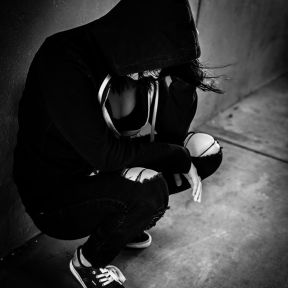Treatment of Depression
In the U.S. women are far more likely than men to seek treatment for depression—as with all other conditions. Nevertheless, it is extremely important for anyone suffering to take steps to treat depression to the point of remission—and several months beyond, which is the generally recognized standard of care.
While episodes of depression may eventually lift by themselves, that may take many months of physical and mental pain, sadness, and disinterest in life, and can be very costly to self, relationships, and work. There is considerable evidence that the longer a depression episode lasts, the more likely are future episodes of greater intensity.
That said, there are many effective treatments for depression, including psychotherapy, which aims to correct the errors of thought and belief that unwittingly underlie depression and to facilitate strategies for coping with stress; medication to provide relief of symptoms, including suicidal ideation, or to facilitate intensive psychotherapy; neuromodulation, involving methods of directly stimulating neural circuitry to restore effective communication between key areas of brain function. There are also many natural or lifestyle measures that individuals can take on their own, from diet and simple exercise to joining a chorus and practicing meditation.
Studies repeatedly show that psychotherapy is at least as effective as medication, and the most effective treatment for many people may be a combination of both.
On This Page
- Does depression ever go away on its own?
- When does depression need treatment?
- What is treatment-resistant depression?
- What does psychotherapy do?
- How do antidepressant drugs work?
- When is ketamine used?
- Do psychedelics help depression?
- What does brain stimulation, or neuromodulation, do?
- What are the major types of brain stimulation?
- How do I know which treatment is best for me?
- Are brain scans useful in determining treatment?
- Are there things I can do on my own to relieve depression?
- What's the best way to help someone who has depression?
- What are the most effective natural treatments for depression?
- Why is exercise important?
- How much physical activity is recommended to stave off depression?

Depressive episodes may lift on their own, but even in the best-case scenario that can take many months and in the interim do significant damage to both your brain and your life. Experts believe that the inflammation involved in depression can, over time, contribute to neurodegeneration and, in a vicious cycle, accelerate pathologic changes in the brain that make future recovery more elusive. In one study of patients with major depression, 23 percent of untreated cases remitted within three months; 32 percent were in remission by six months, and 53 percent within a year. Remission is most likely among children and adolescents.
Any bout of depression that lasts more than two weeks can benefit from treatment, and the earlier it is begun, the better. Early treatment has the highest likelihood of bringing about full remission of symptoms and preventing relapse or recurrence. The so-called burden of depression is great, as the disorder is a major cause of missed work and poor productivity, and it has a devastating effect on relationships, family life, physical health, and general quality of life.
There are four main approaches to treatment—psychotherapy, antidepressant medications, neuromodulation, and lifestyle measures—and all address different facets of the disorder. Chronic and severe depression responds best to a combination of medication and cognitive behavioral therapy (CBT). Signs that depression is responding include less irritability, increased energy, feeling less overwhelmed, normalization of appetite, improved ability to concentrate, return of libido, and improved sense of self.
When patients are given drugs, the effectiveness of the agents is evaluated at regular doctor visits by assessing symptom severity according to standardized criteria. Response is generally defined as a 50 percent reduction of symptoms. But response is not enough.
Even low-level symptoms can have deleterious effects on the brain itself, not simply increasing the likelihood of subsequent episodes but actually accelerating their occurrence. Depression is considered treatment-resistant after multiple types of medications, used singly and in various combinations, fail to significantly improve symptoms or create side effects that are intolerable.
Drugs can relieve the symptoms of depression, but they do not cure depression. Major depression is caused by a number of factors, including ways of responding to stress and reacting to negative experiences and thoughts. Psychotherapy is aimed at the roots of depression, the ways people process their thoughts and feelings. Psychotherapy helps people understand the beliefs, feelings, and thoughts that contribute to their depression. It helps people identify the problems that trigger their depression or contribute to its continuation.
Therapy directs people to reestablishing sources of pleasure in life and helps them regain a sense of control. And it helps people develop effective coping strategies, important not only in relieving a current episode of depression but in preventing future ones. In cognitive behavioral therapy (CBT), the therapist actively helps patients identify and challenge negative thought patterns that contribute to their depressed mood.
The therapist also helps patients dissect what happens to them when they begin to feel emotionally overwhelmed by external events or their own thoughts, and jointly explores strategies—from meditation to reframing their thoughts—that help in such situations. Studies show that the benefits of CBT can be seen in 12 to 16 weeks of weekly sessions in a therapist’s office. CBT is especially good at preventing relapse of depression.
In the brain, electrical signals speed messages from nerve cell to nerve cell but are relayed by chemical signals across the tiny gap between nerve cells. Antidepressant drugs affect those neurotransmitters, such as norepinephrine, serotonin, dopamine and others belonging to a class of chemicals known as monoamines.
Antidepressant medications such as the SSRI's (selective serotonin reuptake inhibitors, the best known of which is Prozac) can increase or decrease neurotransmitters, act as substitute neurotransmitters, or regulate the receptors that the neurochemicals bind to. While those changes may contribute to the effects of antidepressant agents, they are not considered the main source of improvement. The reason is that those changes happen immediately, but the drugs can take six weeks or more to provide relief of symptoms. Researchers believe that the time lag is due to the development of new nerve cell connections—neuroplasticity—which pave the way for mental and behavioral flexibility.
Studies show that 40 to 60 percent of patients treated with an antidepressant experience an improvement in symptoms within six to eight weeks. Care standards specify that once remission is achieved, treatment should be continued for four to nine months.
Ketamine, long used as an anesthetic, is now used against treatment-resistant depression in controlled circumstances. Infused intravenously in carefully titrated doses over a period of hours, it is very fast-acting, relieving symptoms within hours, with the effects of a single infusion lasting for days or a few weeks, in about 50 percent of patients. It is especially useful for helping patients troubled by suicidal ideation and is widely used in emergency psychiatry. A variant form of ketamine, esketamine, is delivered by nasal spray.
Ketamine works by blocking a non-monoamine neurotransmitter, glutamate, which influences the activity of all other neurotransmitters. It can have side effects, such as producing dissociation and hypertension, that, along with its short-lived effect, limit its use.
Given the large percentage of people for whom standard antidepressants do not work—more than 50 percent, in some studies—there is renewed scientific interest in psychedelic agents as treatments for depression, especially depression accompanied by suicide ideation. Ongoing clinical trials show that in carefully monitored settings, the substances, which broaden and deepen consciousness, can dramatically boost the effectiveness of psychotherapy for major depression, facilitating self-awareness and speeding behavior change. Psychedelic-assisted psychotherapy actually seems to motivate people to change, and brain imaging studies of treated patients show durable changes in brain connectivity patterns.
Strictly speaking, all drugs used to treat mental illness can rightfully be called mind-altering agents. But some classic psychedelics are already in clinical use. Ketamine is prescribed off label to treat depression. MDMA is in the advanced phase of clinical trials for treatment of post-traumatic stress disorder, often marked by severe depression. Exactly how agents like psilocybin work in treating depression is not clear, given their complex actions on the brain. They not only affect serotonin receptors implicated in depression; they also have powerful anti-inflammatory effects and stimulate neuroplasticity. As the therapeutic use of psychedelic drugs gains ground, interest has also grown outside the bounds of science in microdosing psychedelics— regularly taking small doses of such agents as a way to maintain mood and general mental health while avoiding the hallucinogenic effects.
In the evolving understanding of depression, the disorder is seen less as a neurochemical deficit, such as lack of the neurotransmitter serotonin or dopamine, than as a problem of wiring—a failure of activation of or interaction between key nodes in neural networks, or the very connections themselves, especially when processing emotion-related stimuli, reward stimuli, or executive functioning.
As a result, treatment now increasingly encompasses methods of electrically or magnetically altering nerve activity by selectively stimulating specific components of brain circuitry. Neuroimaging studies have repeatedly demonstrated functional abnormalities in networks linking such key areas of the brain as the hippocampus, amygdala, and prefrontal cortex.
The goal of neuromodulation is to stimulate neuroplasticity, to jump start the growth of new nerve connections to create new neural activity patterns that restore more mental and behavioral flexibility. Studies show that, over time, the devices can significantly improve mood and memory. Copycat devices are now being snapped up by elite athletes and others looking for a performance edge; they undergo a bout of stimulation before training.
In transcranial magnetic stimulation (TMS), one or two externally placed electromagnetic coils deliver magnetic pulses to generate currents in deep brain tissue implicated in depression’s stall-out. The pulses generated are of the same type and, most often, of the same strength as those generated by magnetic resonance imaging (MRI) machines. No anesthesia is required, and stimulation is applied during a series of sessions in a doctor’s office. Approximately 60 percent of people who do not benefit from antidepressant medication improve significantly or achieve full remission with TMS treatment.
• In transcranial magnetic stimulation (TMS), one or two externally placed electromagnetic coils deliver magnetic pulses to generate currents in deep brain tissue implicated in depression’s stall-out. The pulses generated are of the same type and, most often, of the same strength as those generated by magnetic resonance imaging (MRI) machines. No anesthesia is required, and stimulation is applied during a series of sessions in a doctor’s office. Approximately 60 percent of people who do not benefit from antidepressant medication improve significantly or achieve full remission with TMS treatment.
• Transcranial direct current stimulation (tDCS) applies a weak electrical current to brain sites through the scalp from a headset-like device. The goal is to target brain circuits involved in attention, perception, learning, and memory that affect mood.
• In deep brain stimulation, reserved for highly treatment-resistant depression, an externally programmable device is implanted in the chest to deliver electrical signals to targeted sites in the brain. It is like a pacemaker for the brain.
• Intermittent theta-burst stimulation (iTBS) is a noninvasive form of brain stimulation approved for use in treatment-resistant depression.
There is a wide consensus among experts that mild depression responds to psychotherapy such as cognitive and behavioral therapy (CBT), without drugs. More severe depression responds best to a combination of drugs and psychotherapy. Antidepressant drugs are most effective against depression that is moderate to severe and chronic in nature.
Clinical psychiatrists who are highly experienced in treating depression have a general sense of which symptoms, and which clusters of symptoms, may respond to which antidepressant drugs. Still, more often than not, it takes a trial of one or more agents to find the most effective one, or combination of drugs, and the most effective dose, with the fewest, or most tolerable, side effects.
Sometimes side effects—nausea, weight gain, agitation, insomnia, loss of sex drive, difficulty reaching orgasm—are the deciding factors in whether to continue drug treatment. Treatment is successful when there is a complete remission of symptoms and patients can feel that they can function as well as, or better than, before they were sick.
Brain scans have been very helpful in research to identify brain regions that are key to processing emotional stimuli and circuits of neural communication altered in depression. This information has guided the development and use of various kinds of neuromodulation devices as treatment. It has also helped researchers assess the mode of action and effectiveness of drugs in development. It is also used in studies of the effectiveness of psychotherapy, to assess brain function before and after treatment.
But neuroimaging remains primarily a diagnostic and research tool, and a costly one at that. And while it is helping identify nerve circuits involved in distinct clusters of depressive symptoms, such use is very much for research purposes, In general, scanning does not yet provide enough specificity or utility for personalizing therapy.
Lifestyle changes can be extremely important in achieving depression relief. Chief among healthy habits to foster is addressing disturbed sleep, because sleep is so essential for feeling good and affects every system of body and brain. Establishing a regular sleep routine is considered essential, although sleep disturbance may be among the last symptoms of depression to completely resolve.
Stable sleep patterns by themselves have a positive influence on body metabolism and reduce the risk for cardiovascular disease that is associated with depression. Minimizing exposure to experiences of neglect and abuse is also important. Behavioral activation is a proven source of relief in depression, and while a therapist can help, patients can put it into action on their own.
Depression causes people to shut down; they lose interest in doing things, and their world contracts, depriving them of needed sources of stimulation and pleasure. Therefore, doing things—even when it goes against all instincts—brings about benefits on many levels. For example, maintaining social contact is a major source of relief; it acts physiologically, by tempering stress reactivity, and counters the bleakness of depression by providing a source of pleasure.
The very best way to help someone who is depressed is to get them to a therapist for treatment. There are many other ways to help. One is to silently pitch in on the chores of daily living that usually seem overwhelming to someone with depression.
Because depression can be thought of as behavioral shutdown, behavioral activation is important, even though the disorder destroys motivation. To support regular activity, better than reminding someone to get exercise is handing them a jacket and taking them out for a walk; the exercise, the sunlight, and the companionship all have antidepressant effects. So does the change of scenery. Establishing routines such as a regular sleep time is helpful. Also important is maintaining regular social contact with someone who is depressed.
Any amount and type of activity is helpful—light gardening, light housework, walking to a nearby store. In fact, a study exploring the effects of activity on more than 2 million people found that the greatest benefit of activity occurs at the lowest levels—moving from no activity at all to some.
Studies consistently show that an anti-inflammatory and metabolically functional diet, regular exercise, exposure to sunlight, social support and companionship, sleep, and sex have an effect on depressive symptoms. All are low-cost and noninvasive approaches to relief that require no prescription. All in fact contribute to general well-being of all people at all times.
In numerous scientific studies, a healthy diet that contains an array of anti-inflammatory compounds normally found in fruits, vegetables and fatty fish has been linked to lower rates of depression. In addition, studies show that depressed patients randomly assigned to a diet with reduced carbohydrates, sugar, and processed meats report fewer symptoms than those consuming a standard Western diet; remember, depression disrupts basic body metabolism.
Behavioral activation is a type of therapy that doesn't have to be limited to therapists:It involves countering the effects of depression by encouraging patients to select and engage in rewarding activities that add necessary pleasure to life. Singing in a chorus is known to boost mental health; both the singing and the socialization affect autonomic nervous system reactivity to stress. Religious involvement is another proven stress buffer.
Exercise is one of the most effective ways to jump-start neuroplasticity—the exit ramp from depression. Numerous studies show that engaging in simple activity such as walking immediately stimulates the growth of new nerve cell connections, the foundation of neuroplasticity.
Exercise appears to especially increase neuroplasticity in the hippocampus, a center of learning and memory and an area of the brain especially vulnerable to the disruptive effects of stress. In addition, weight training, or resistance, exercise has been shown to increase the signaling power of nerve cells.
Engaging in any form of exercise restores a sense of control over one’s life. Studies show that even 15 minutes of physical activity daily—especially in the afternoon—can have beneficial effects on mood, energy, and sleep. In a major study of nearly 34,000 adults, followed over 11 years, as little as one hour of physical activity per week was found to prevent 12 percent of expected future cases of depression.
Other studies show that exercise is an effective preventive measure even in those genetically predisposed to depression. Because depression dampens people's motivation and energy, experts stress that it is important to start somewhere—doing anything is better than doing nothing— and to start small, beginning with a few minutes of walking.














